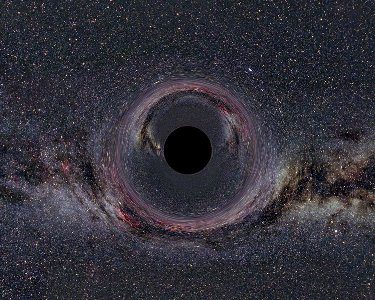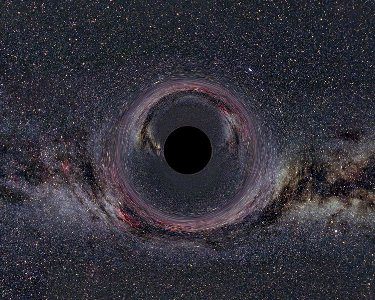 Let’s start with the beginning, shall we ? A black hole is a region of space in which the gravitational field is so powerful that nothing, not even light, can escape its pull after having fallen past its event horizon. That means that electromagnetic radiation (e.g. visible light) is unable to break away from the attraction of these massive objects. Hence the name. They were first described by Einstein’s general theory of relativity, which he developed in 1916.
Let’s start with the beginning, shall we ? A black hole is a region of space in which the gravitational field is so powerful that nothing, not even light, can escape its pull after having fallen past its event horizon. That means that electromagnetic radiation (e.g. visible light) is unable to break away from the attraction of these massive objects. Hence the name. They were first described by Einstein’s general theory of relativity, which he developed in 1916.
But now, a team of international scientists have used flowing water to simulate a black hole, testing Stephen Hawking’s theory that black holes are not black after all. While I fully understand and appreciate what Stephen Hawking has done for science, many of his theories are… not always as good as many people think. The media has a player a role here too. The researchers, led by Professor Ulf Leonhardt at the University of St Andrews and Dr Germain Rousseaux at the University of Nice, used a water channel to create analogues of black holes, simulating event horizons.
An event horizon is a boundary in spacetime, an area surrounding a black hole, beyond which events cannot affect an outside observer.The scientists sent waves against the current, varied the water speed and the wavelength, and filmed the waves with video cameras. They made observations for several months and wanted to see whether the waves show signs of Stephen Hawking’s famous prediction that the event horizon creates particles and anti-particles. Professor Ulf Leonhardt, from the School of Physics and Astronomy, explained,
“It is probably impossible to observe the Hawking radiation of black holes in space, but something like the radiation of black holes can be seen on Earth, even in something as simple as flowing water.”
The team showed that even something as simple as water can bring out conclusions about things as complex as black holes. Professor Leonhardt continued,
“Flowing water does not create anti-particles, but it may create anti-waves. Normal waves heave up and down in the direction they move, whereas anti-waves do the opposite.
“We definitely have observed these negative-frequency waves. These waves were tiny, but they were still significantly stronger than expected. However, our experiment does not completely agree with theory and so much work remains to be done to understand exactly what happens at the event horizon for water waves.”
Here’s a small video showing those phenomenae, and the rest can be seen here.









